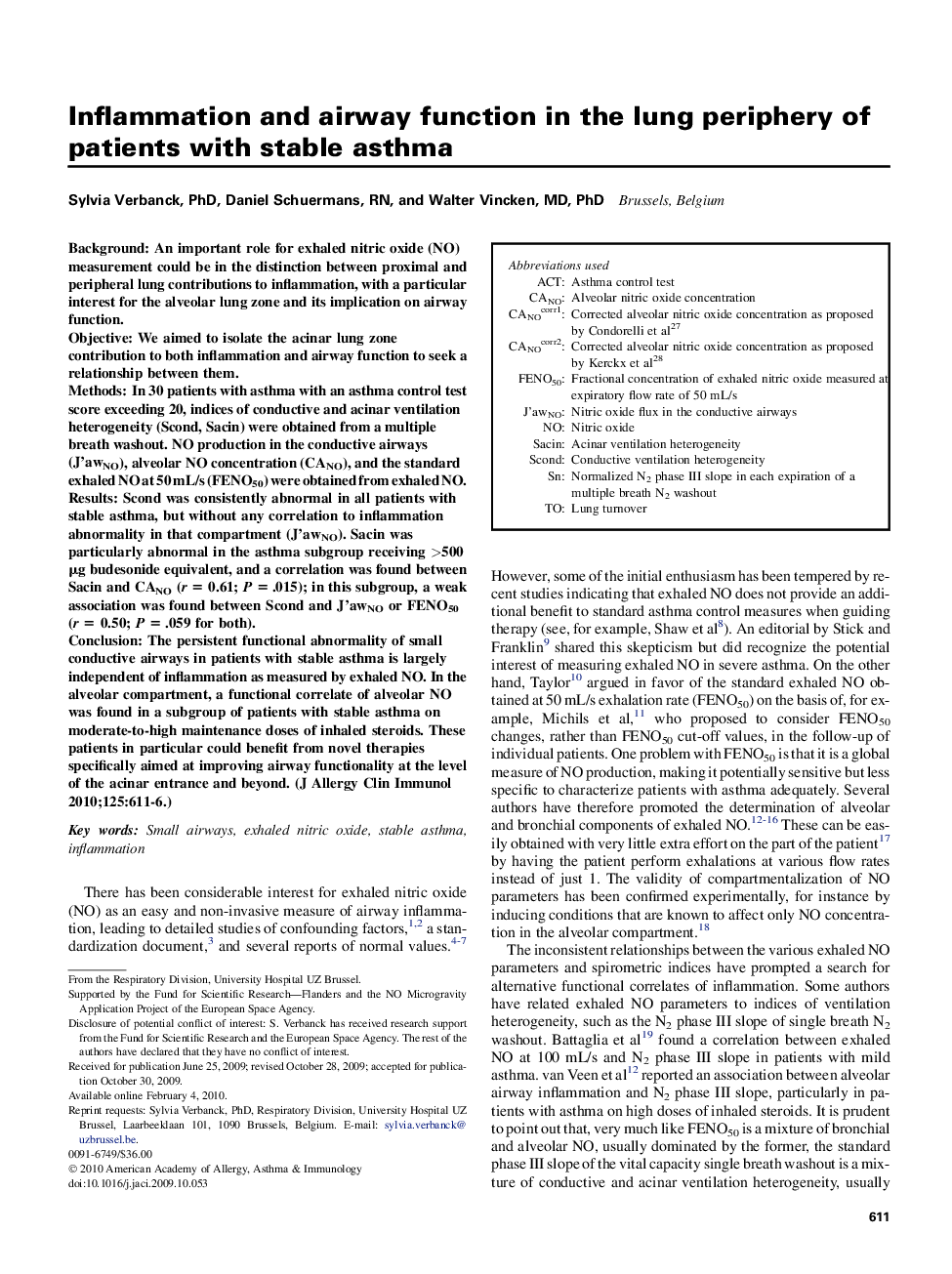| Article ID | Journal | Published Year | Pages | File Type |
|---|---|---|---|---|
| 3199948 | Journal of Allergy and Clinical Immunology | 2010 | 6 Pages |
BackgroundAn important role for exhaled nitric oxide (NO) measurement could be in the distinction between proximal and peripheral lung contributions to inflammation, with a particular interest for the alveolar lung zone and its implication on airway function.ObjectiveWe aimed to isolate the acinar lung zone contribution to both inflammation and airway function to seek a relationship between them.MethodsIn 30 patients with asthma with an asthma control test score exceeding 20, indices of conductive and acinar ventilation heterogeneity (Scond, Sacin) were obtained from a multiple breath washout. NO production in the conductive airways (J'awNO), alveolar NO concentration (CANO), and the standard exhaled NO at 50 mL/s (FENO50) were obtained from exhaled NO.ResultsScond was consistently abnormal in all patients with stable asthma, but without any correlation to inflammation abnormality in that compartment (J'awNO). Sacin was particularly abnormal in the asthma subgroup receiving >500 μg budesonide equivalent, and a correlation was found between Sacin and CANO (r = 0.61; P = .015); in this subgroup, a weak association was found between Scond and J'awNO or FENO50 (r = 0.50; P = .059 for both).ConclusionThe persistent functional abnormality of small conductive airways in patients with stable asthma is largely independent of inflammation as measured by exhaled NO. In the alveolar compartment, a functional correlate of alveolar NO was found in a subgroup of patients with stable asthma on moderate-to-high maintenance doses of inhaled steroids. These patients in particular could benefit from novel therapies specifically aimed at improving airway functionality at the level of the acinar entrance and beyond.
